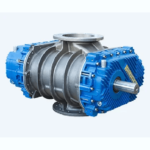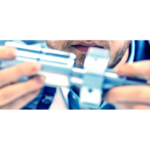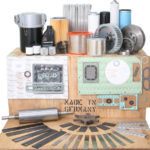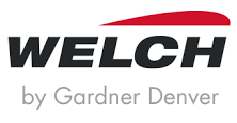What is a Rotary Vane Vacuum Pump?
A rotary vane vacuum pump in its simplest definition is a type of pump technology that enables the compression of air inside the pump chamber to create suction for the removal of air molecules from a vessel or area.
Rotary vane vacuum pump works on a positive-displacement pumping principle. The design consists of a rotor, which is mounted eccentrically inside a cylindrical housing or stator. Blades, mounted inside the rotor, move in and out due to centrifugal force following the internal surface of the housing. A more detailed description of the operating principle of an oil lubricated and a dry running rotary vane pump can be seen further in this article.
What are the benefits of rotary vane vacuum pumps?
The Benefits of oil in a Rotary Vane Vacuum Pump:
- Oil Sealed – oil provides an effective seal enabling an ultimate vacuum up to <0,5 mbar (abs.)
- Lubrication prevents wear – Aluminium blades, rotor, housing and housing cover bearings are lubricated with oil making them virtually wear-free.
- Reduced Operating Temperature – Heat is reduced as oil reduces friction with the compression chamber
- Corrosion protection – oil protects all components from corrosion and reaction with the gas
- Cleaning effect – The oil cleans the compressor chamber of impurities and prevents damage extending pump life and performance.
Other benefits of all Rotary Vane Vacuum Pump designs:
- High end vacuum with one compressor unit
- Blades with long service life
- Optimised oil-water separation (oil lubricated only)
- High water vapour tolerance, by gas ballast (oil lubricated only)
- Low noise level
- Low vibration
- Virtually pulsation free
- Easy to maintain
- Suitable for a wide range of industrial applications
- Completely oil free (dry running rotary rane pumps only)
What are the parts of Rotary Vane Vacuum Pump?
Every rotary vane vacuum pump is based on the same standard components. Depending on the design, size or model, there will be variations in components. Below are some standard components you may find in oil lubricated and dry running machines.
Overview of an Oil Lubricated Rotary Vane Vacuum Pump:
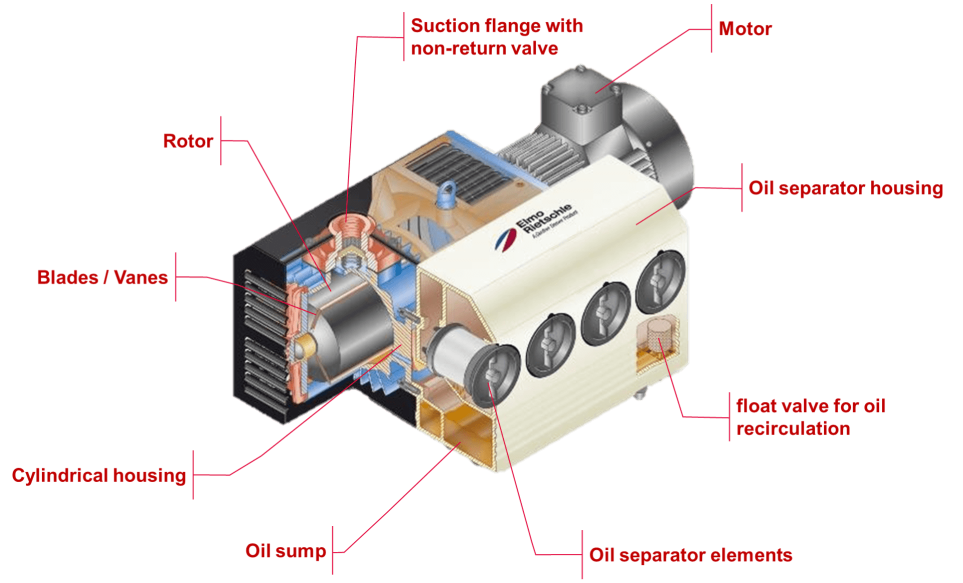
- Blades (also known as ‘vanes’)
- Rotor
- Cylindrical Housing
- Suction Flange
- Non-return valve
- Motor
- Oil Separator housing
- Oil Sump
- Oil
- Filters
- Float Valve
Overview of an Dry Running Rotary Vane Vacuum Pump:
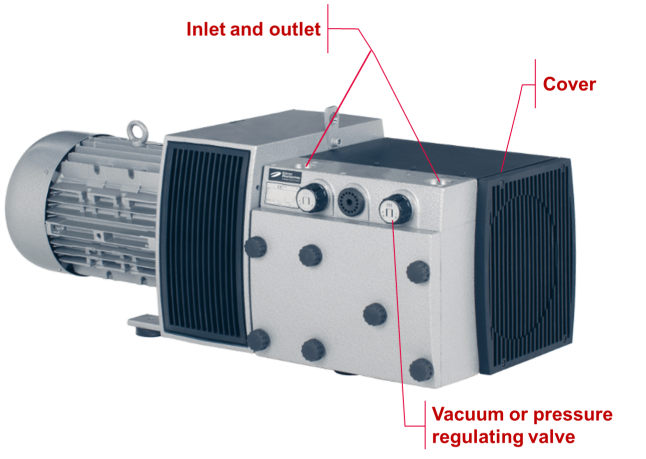
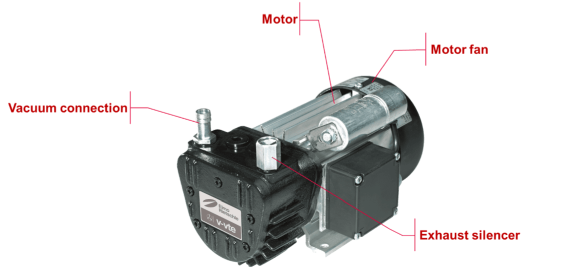
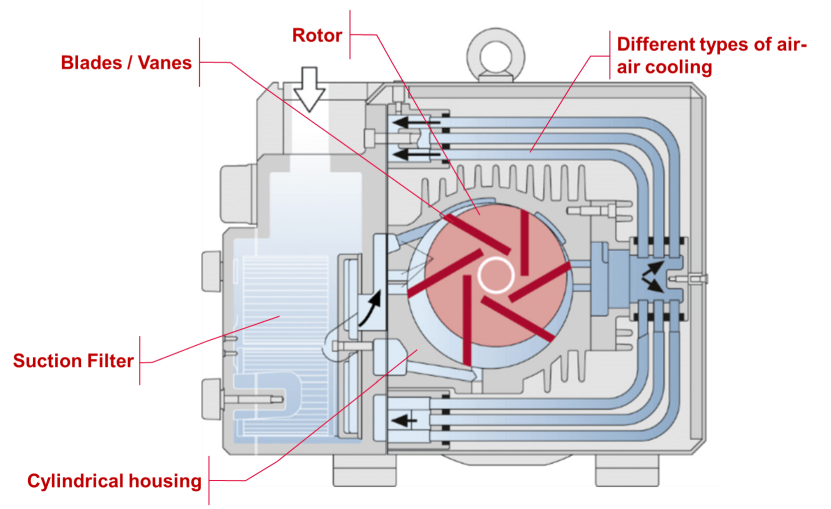
Oil lubricated rotary vanes
Chemical and pharmaceutical processes
- Crystallization
- Degassing
- Distillation
- Drying
- Evaporation
- Fractionation
- Impregnation
- Super cooling
- Vacuum coating (sublimation)
- Vacuum filtration
Environmental engineering
- Aeration
- Drying
- Dust extraction systems
Food processing
- Bottling and filling machines
- Cutting machines
Industrial applications
- Drying systems
- Dust extraction systems
- Industrial furnaces
- Vacuum hold down
Packaging industry
- Centralized vacuum systems
- Packaging machines
Pneumatic conveying
Woodworking industry
- Dust extraction systems
- Vacuum hold down
Dry running rotary vanes
Environmental engineering
- Aeration
Industrial applications
- Lifting and holding
- Pick and Place
Packaging industry
- Packaging machines
Printing industry
- Post-press applications
- Printing presses
Woodworking industry
- Vacuum hold down
What is the operating principle of a Rotary Vane Vacuum Pump?
Below is an overview of the operating principle for an oil lubricated rotary vane vacuum pump. Remember: Every oil-lubricated rotary vane vacuum pump is based on the same standard components. Depending on the design, size or model, there are further different components.
1. Pressure increase by volume reduction is the principle behind rotary vane operation. The whole cylinder housing is wetted with a film of oil on which the blades run almost without any wear.
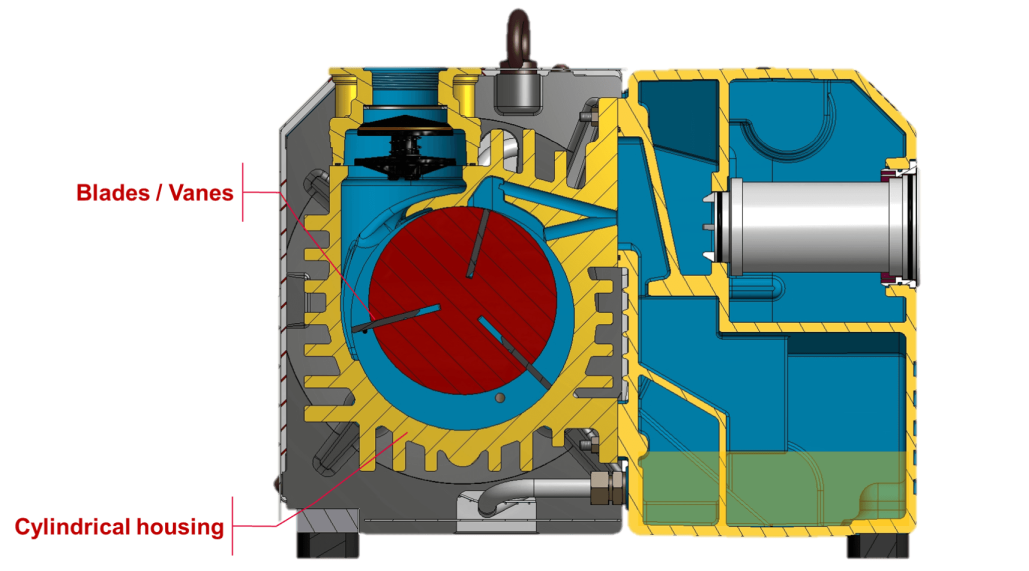
2. The oil lubrication is produced purely by the differential pressure of the housing and the oil separator housing. This is achieved through some oil pipes between the housings.
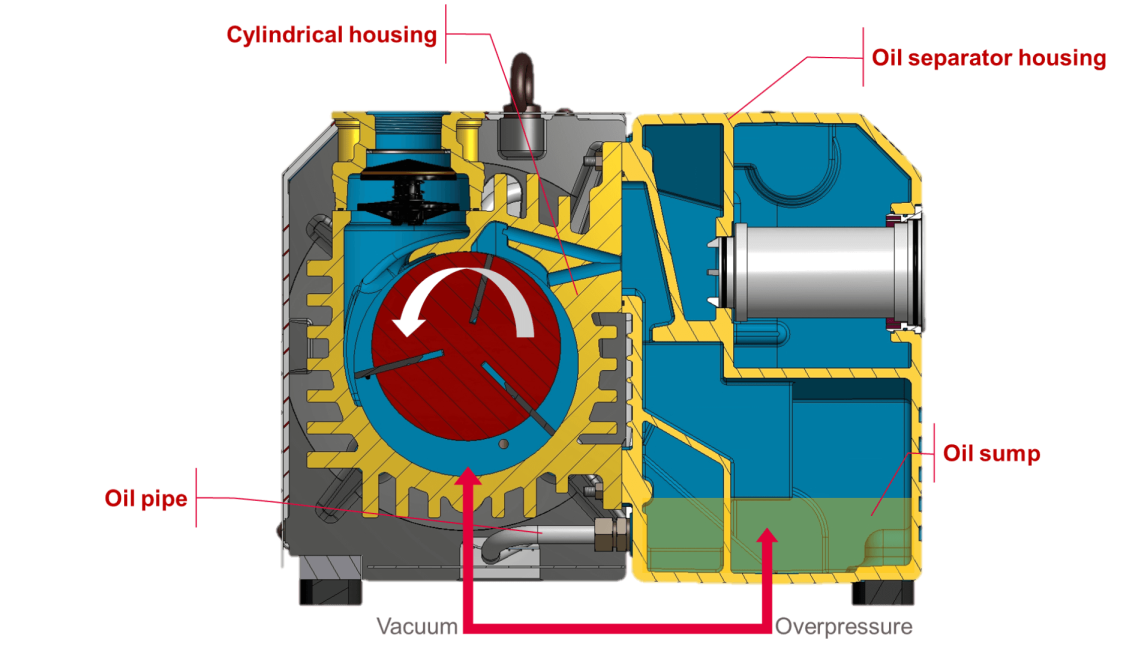
3. In a cylindrical housing, a rotor is positioned eccentrically so that it is on the top almost touching the cylinder housing. The blades are pressed on the wall of the housing by centrifugal force and generate three different chambers which capture the air.
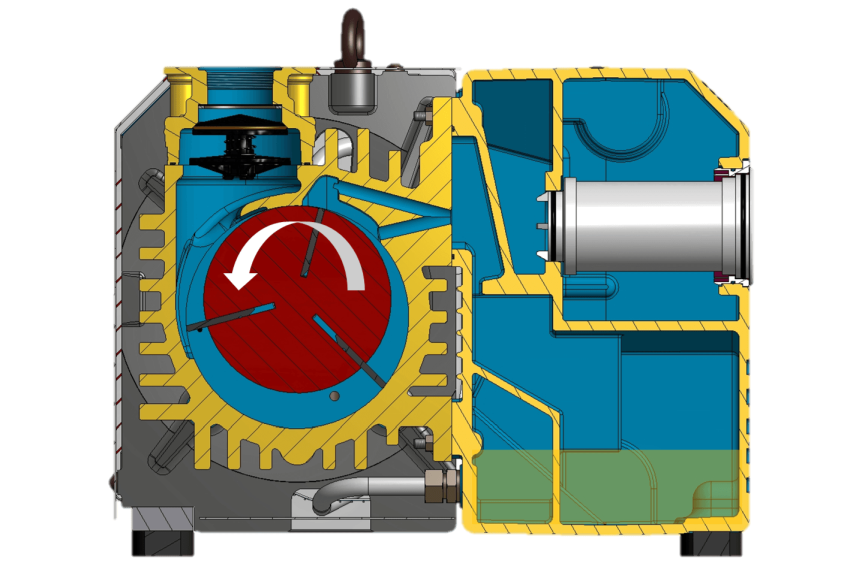
4. When the first chamber is opened, the air flows through the suction flange into the compressor chamber.
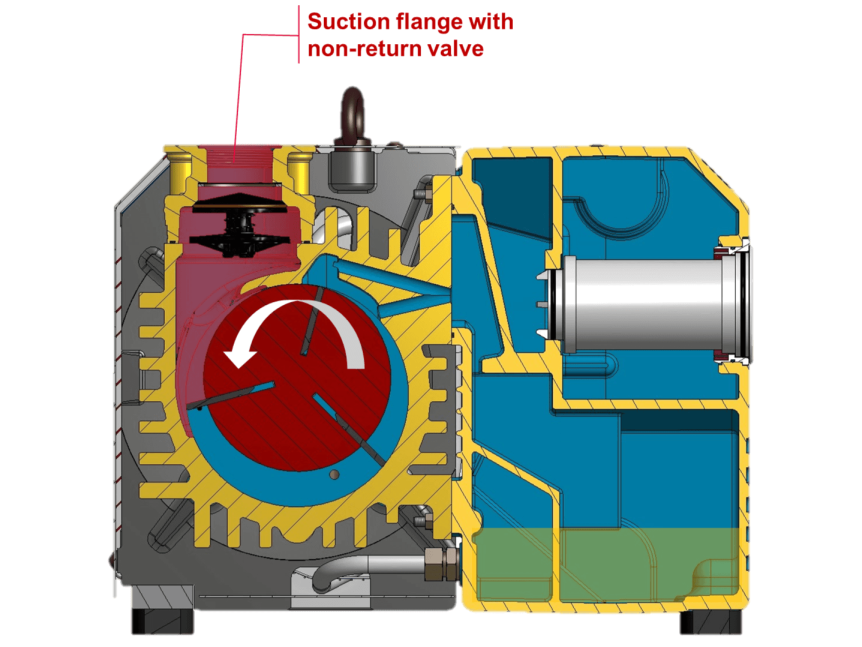
5. While the rotor rotates, the next blade closes this chamber (and opens directly the next one) At this point the area between the blades has achieved its maximum air volume.
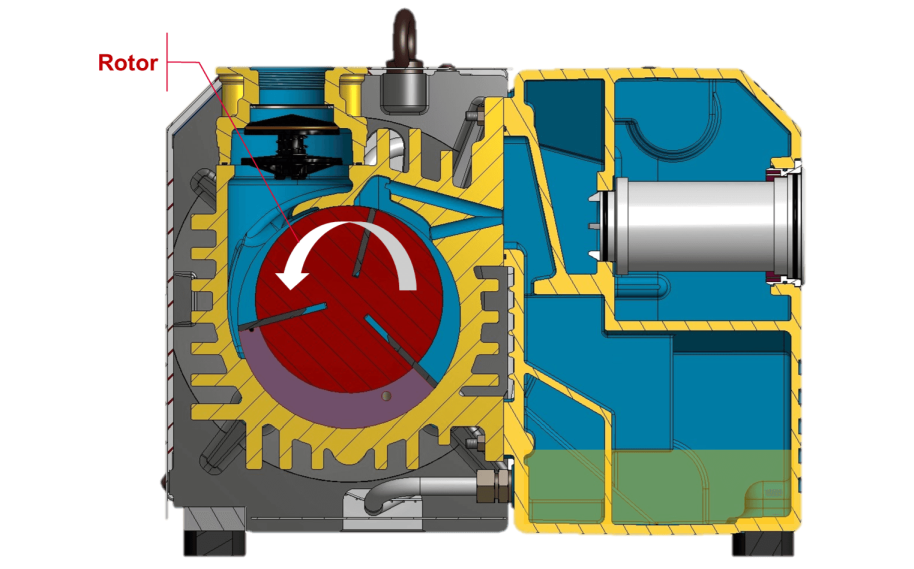
6. The oil gas mixture gets compressed by volume reduction and blows out into the oil separator housing.
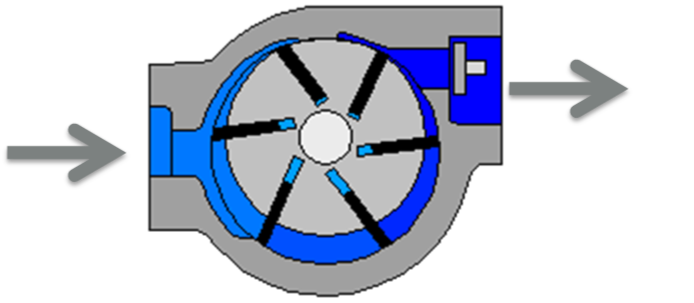
7. Some pump models are fitted with outlet valves which stop the backflow of discharged air when the maximum pressure has been reached or the pump is switched off.
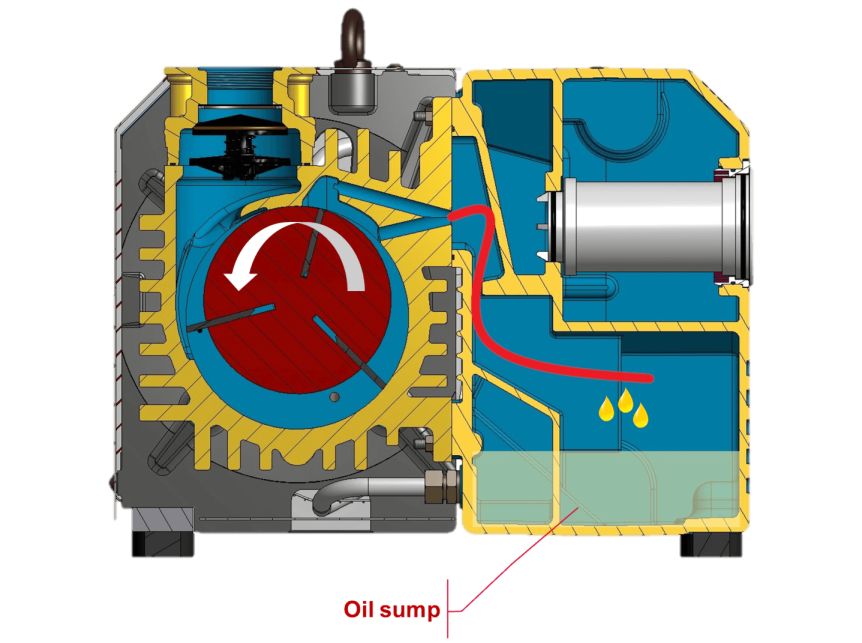
8. Oil is mechanically separated from the gas by the complex construction of the oil separator housing. Oil is collected in the oil sump.
This process removes 95-98% of the oil content in the air.
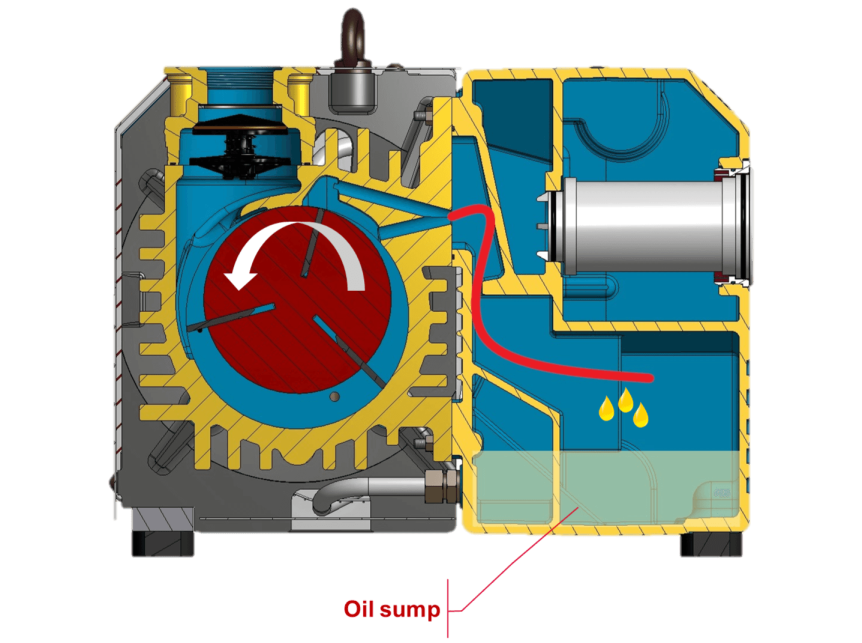
9. The remaining oil gas mixture is then taken through fine filter elements which removes the remaining small oil particles. These oil particles will be reintroduced through a float valve into the pump‘s oil circuit.
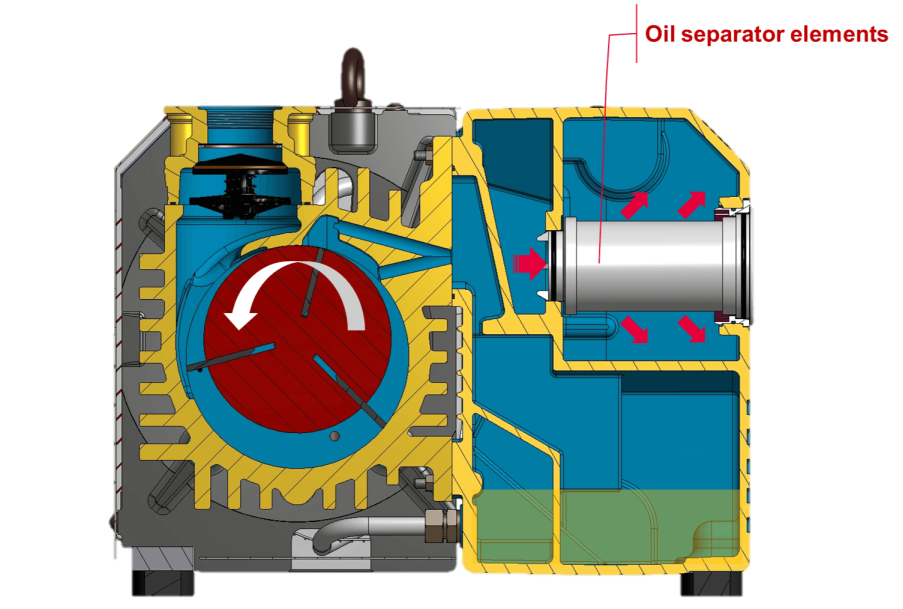
10. Virtually oil-free gas can either be blown out through the air outlet or through hoses or pipes.
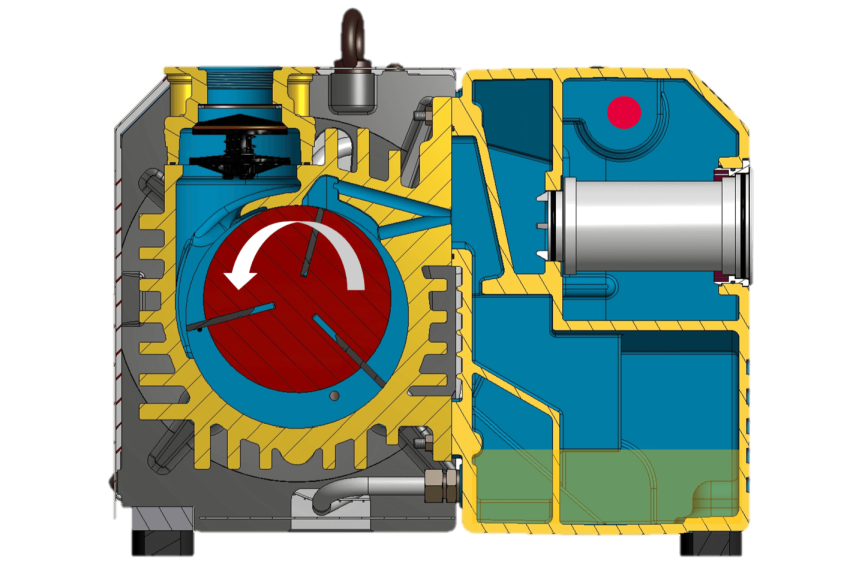
Below is an overview of the operating principle for a dry running rotary vane vacuum pump
Each dry running rotary vane pump is based on the same standard components. Depending on the design, size or model, there are further different components. Overall the operating principles for a Dry Running Rotary Vane pump are very similar to that of an oil lubricated pump.
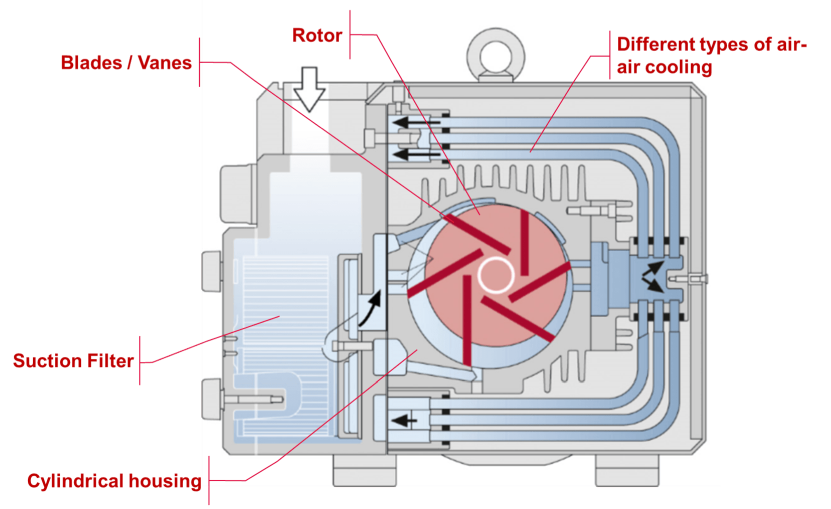
1. Similar to their oil lubricated counterparts, pressure increase by volume reduction is the principle behind dry running rotary vane operation.
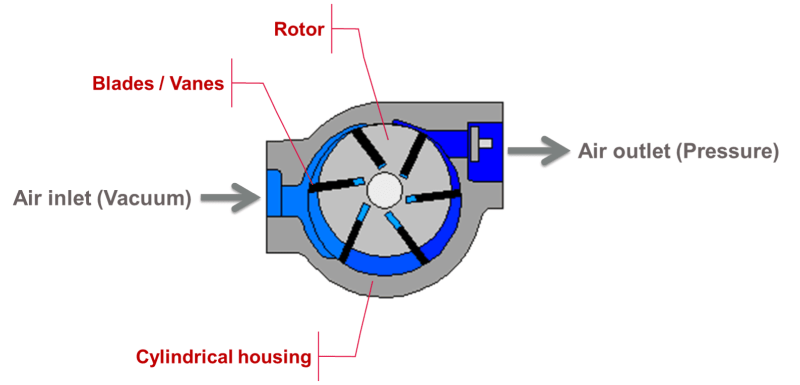
2. The dry running pumps use dry graphite vanes, which rub over the surface of the housing cylinder. This creates a graphite layer on the surface, which allows the vanes to slide with minimal wear.
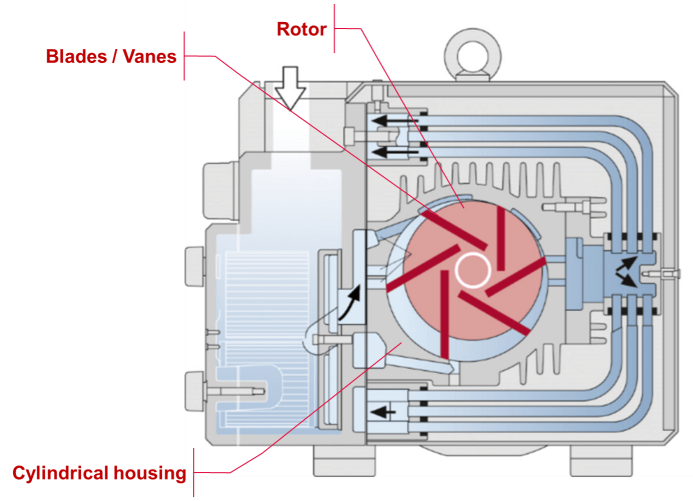
3. This creates a graphite layer on the surface, which allows the vanes to slide with minimal wear.
4. As with the oil-lubricated version, the air must also be filtered after compression to blow out nearly particle-free air. In addition, the air is normally led through an air-air cooler to reduce the temperature of the exhaust air.


